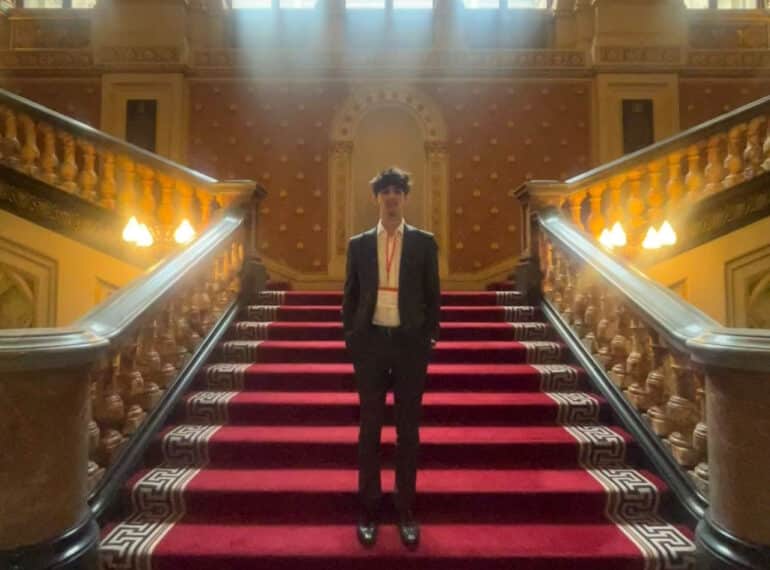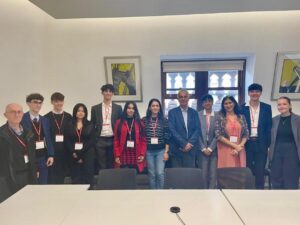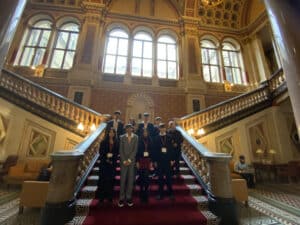
Sixth-former Hardik Ingale won a visit to Downing Street and a tour of the Treasury after reaching the final of the Young Economist of the Year competition.
 Hardik’s essay was one of only five entries to reach the final in the Discover Economics contest, which was backed by the Royal Economic Society.
Hardik’s essay was one of only five entries to reach the final in the Discover Economics contest, which was backed by the Royal Economic Society.
He impressed the judges with his carefully researched exploration of How can economics explain the high price of a supercar?
Head of Economics Krishna Shah said: “Hardik entered the competition on his own initiative during the summer holidays and was meticulous in his approach. I congratulate him on this considerable success.”
Hardik’s choice of topic reflected his interest in Formula One.
His research included:
- Academic articles from the JSTOR digital library;
- Online articles offering diverse perspectives;
- YouTube videos explaining supercar production and market dynamics;
- Investigation into car companies, their products, and economic strategies.
His central argument was that the high price of supercars could be attributed to multiple economic factors – including high manufacturing costs, the costs involved in developing technological innovation and in maintaining the exclusivity of a brand, and the dominance of a small number of firms in this market. Most of all, though, he placed a strong emphasis on psychological factors – including the motivations consumers, who buy supercars for their value as status symbols.
 The final of the competition was held at accountants’ KPMG’s offices. Hardik, who is in Year 12, gave a ten-minute presentation, which was followed by a five-minute question-and-answer session with the judges, who were drawn from Government policy bodies as well as the Financial Times, who sponsored the competition, together with KPMG UK.
The final of the competition was held at accountants’ KPMG’s offices. Hardik, who is in Year 12, gave a ten-minute presentation, which was followed by a five-minute question-and-answer session with the judges, who were drawn from Government policy bodies as well as the Financial Times, who sponsored the competition, together with KPMG UK.
Hardik, who hopes to read Economics or Finance at university, described his trip to Downing Street as “amazing”. As well as being photographed outside Number 10, he visited 11 Downing Street, the official residence of the Chancellor of the Exchequer, meeting the head of the Government Economic Service, Sam Beckett. He also toured the Treasury and met officials there, enjoying some discussions about careers in public service and government. The day even included meeting Number 10’s famous feline resident, Larry the cat!


 Under the overall theme of International Relations, the 24th edition of the publication includes a special front section headed Has Trump damaged the dollar? which looks at the impact of tariffs and at the dollar’s role as the world’s reserve currency.
Under the overall theme of International Relations, the 24th edition of the publication includes a special front section headed Has Trump damaged the dollar? which looks at the impact of tariffs and at the dollar’s role as the world’s reserve currency. Contributors come from Years 9–11. Many illustrate their articles with tables and graphs.
Contributors come from Years 9–11. Many illustrate their articles with tables and graphs.

 Having been selected for the FT Student Advocate Programme, the pair threw themselves into the role, securing 94 sign-ups from other QE boys keen to read the FT and find out more about its work. This figure was the highest for any school worldwide.
Having been selected for the FT Student Advocate Programme, the pair threw themselves into the role, securing 94 sign-ups from other QE boys keen to read the FT and find out more about its work. This figure was the highest for any school worldwide. As part of their involvement, Karan and Samrath gave a talk to the Gresham Society (QE’s Economics society), in which they critically analysed the impacts of the most recent decisions of the Bank of England’s Monetary Policy Committee (MPC) on the economy. Another focus of attention was the economic policy of President Trump.
As part of their involvement, Karan and Samrath gave a talk to the Gresham Society (QE’s Economics society), in which they critically analysed the impacts of the most recent decisions of the Bank of England’s Monetary Policy Committee (MPC) on the economy. Another focus of attention was the economic policy of President Trump. As part of the School’s involvement with the FT, its Head of Visual and Data Journalism, Alan Smith, came in to give a lecture earlier this year.
As part of the School’s involvement with the FT, its Head of Visual and Data Journalism, Alan Smith, came in to give a lecture earlier this year.
 QE’s student-run Economics journal reflects in its first section on the profound changes of the past five years, looking especially at the lasting impact of the pandemic.
QE’s student-run Economics journal reflects in its first section on the profound changes of the past five years, looking especially at the lasting impact of the pandemic.
 Avi triumphed in the Next Generation Essay Economics competition – run by the Foreign, Commonwealth and Development Office (FCDO) and London School of Economics and Political Science (LSE) – with his submission focusing on debt payments by developing countries.
Avi triumphed in the Next Generation Essay Economics competition – run by the Foreign, Commonwealth and Development Office (FCDO) and London School of Economics and Political Science (LSE) – with his submission focusing on debt payments by developing countries. Avi, who is currently applying to read Economics at Cambridge, said that his research for the essay was much longer than that for previous competitions. “It took a while to grasp a lot of the complex ideas like bond premiums, payoff structures and cyclicality of demand for bonds: I think it was a week where I researched for the essay in my free time, letting the sources take me down rabbit holes before I eventually felt I understood enough to write it.
Avi, who is currently applying to read Economics at Cambridge, said that his research for the essay was much longer than that for previous competitions. “It took a while to grasp a lot of the complex ideas like bond premiums, payoff structures and cyclicality of demand for bonds: I think it was a week where I researched for the essay in my free time, letting the sources take me down rabbit holes before I eventually felt I understood enough to write it.